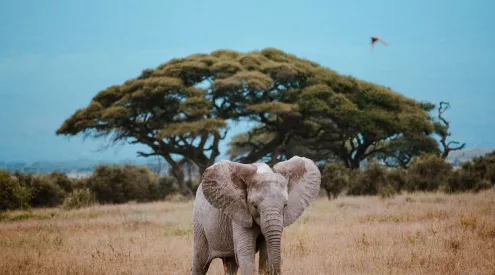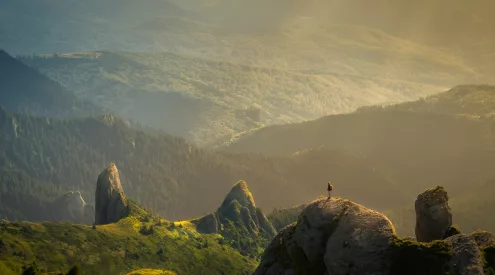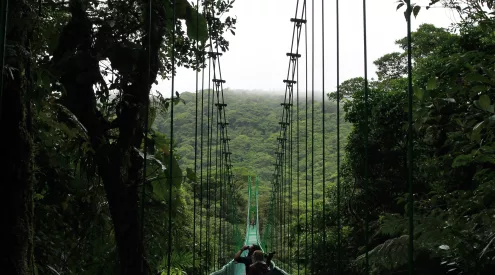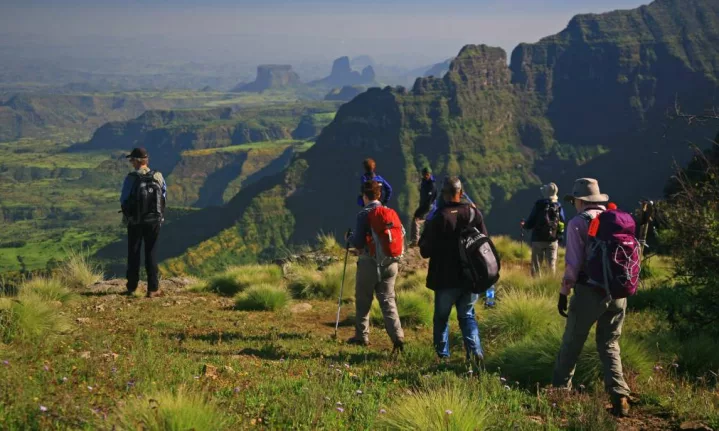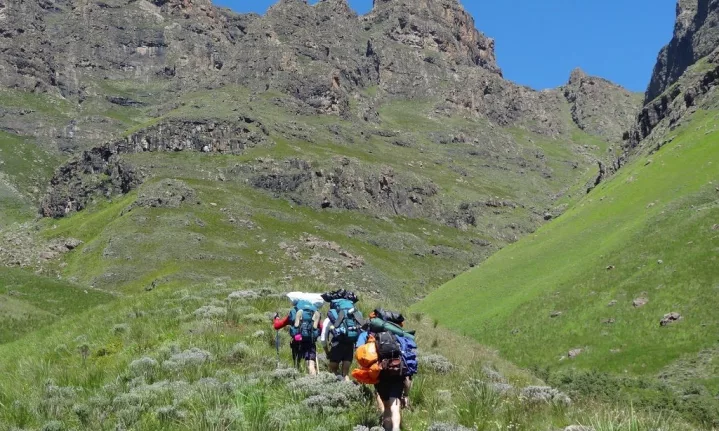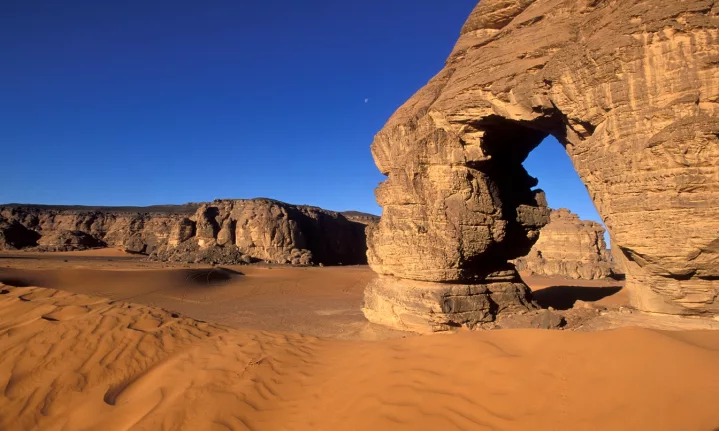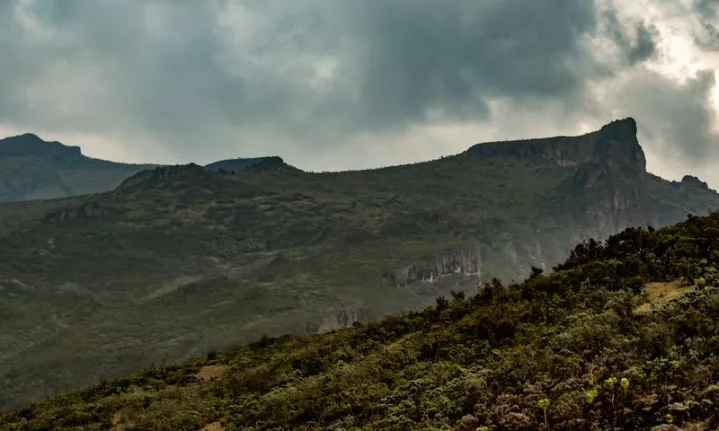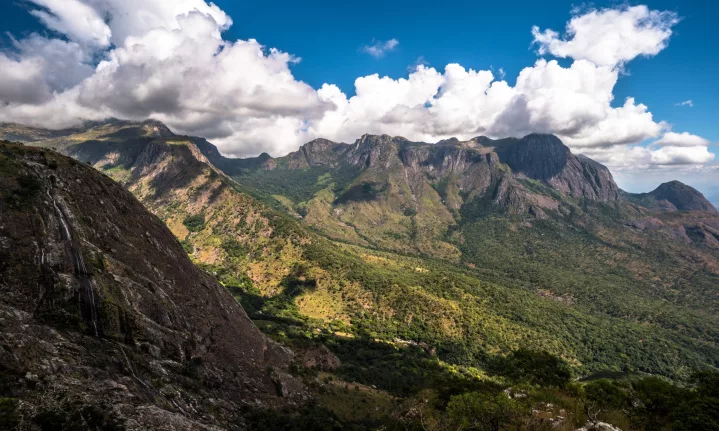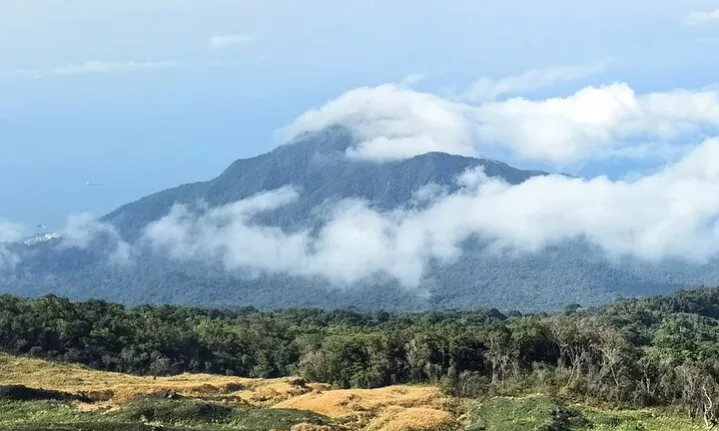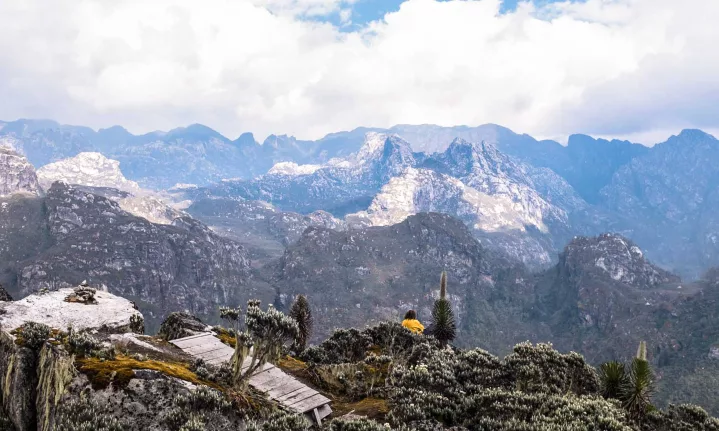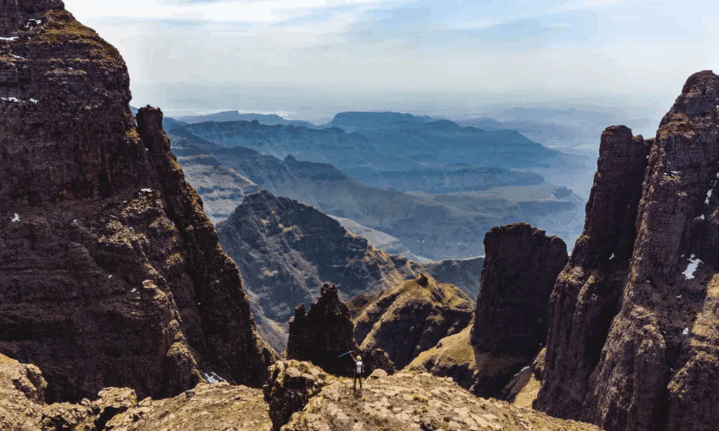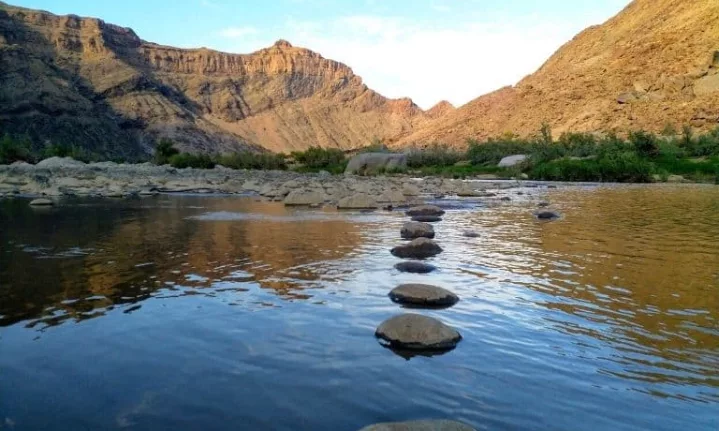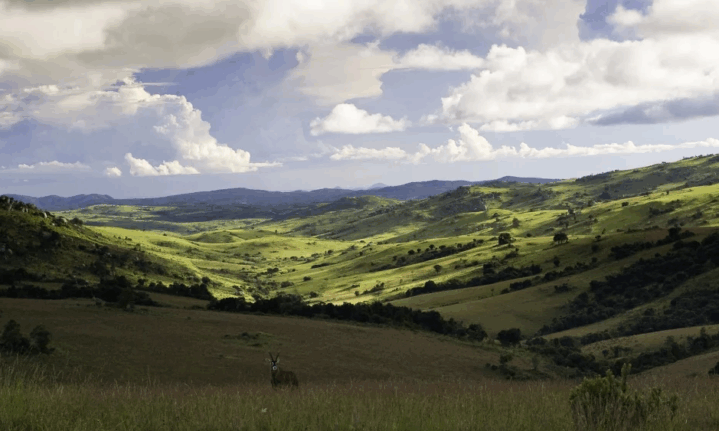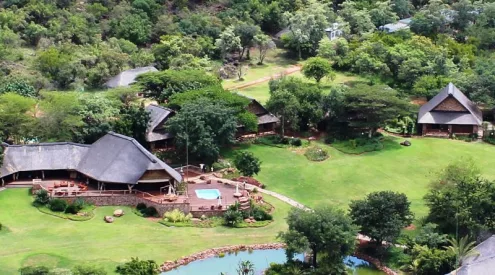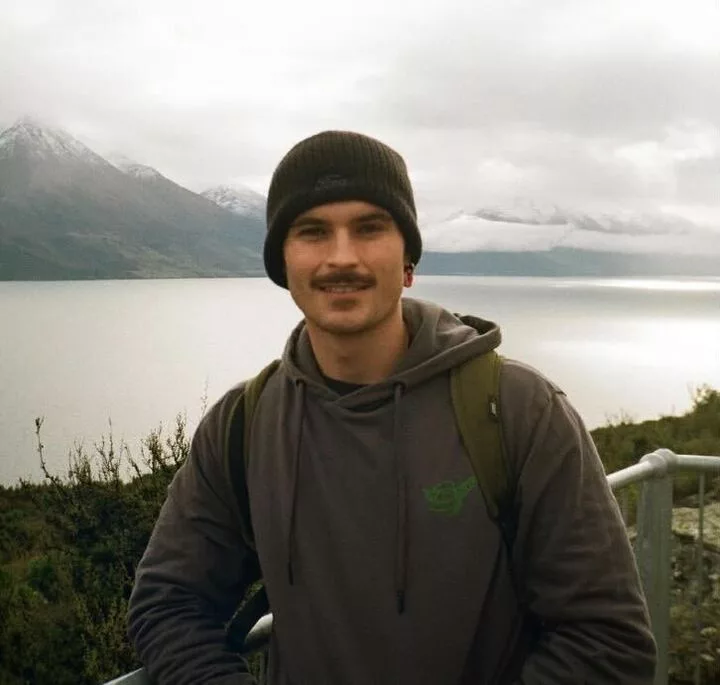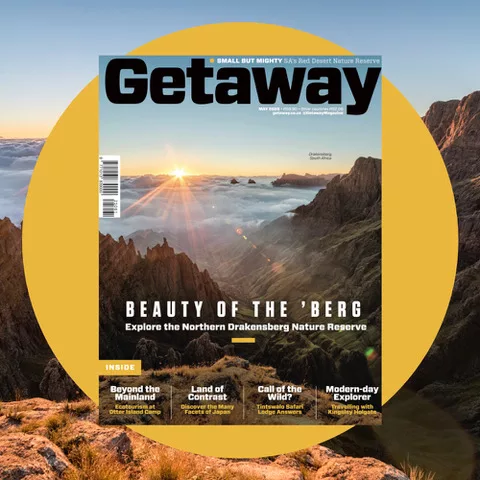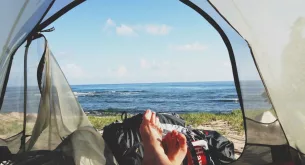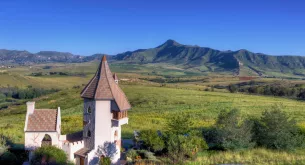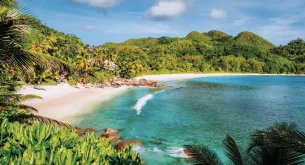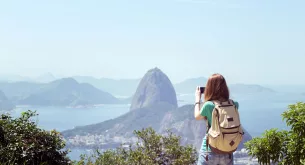Mount Kilimanjaro may be Africa’s best-known peak, but it’s far from the only hike worthy of a spot on your bucket list. Across the continent, lesser-known trails wind through deserts, volcanoes, cloud forests and canyons—often with fewer crowds and deeper cultural immersion.
Here are 10 unforgettable hikes that promise wild adventure and soulful solitude.
Simien Mountains – Ethiopia
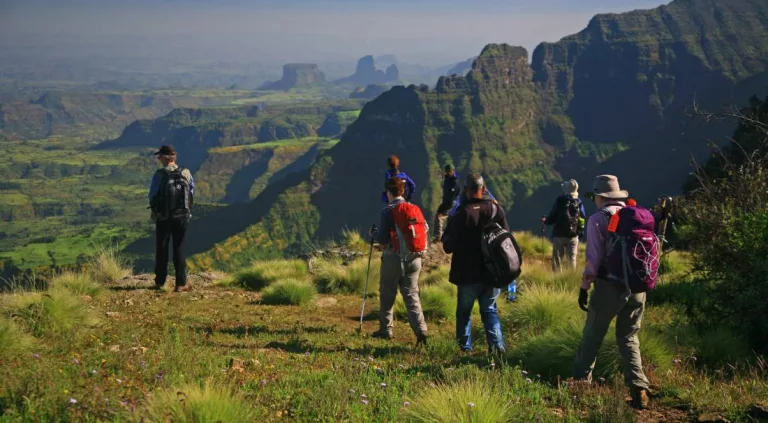
Picture/World Expeditions
Trek along knife-edge ridgelines in Ethiopia’s Simien Mountains, home to some of the continent’s most dramatic high-altitude scenery. This UNESCO-listed national park shelters endemic species like the Gelada baboon and Walia ibex, while multi-day hikes lead through deep valleys, isolated villages and camps perched at over 3,000m. The crowning summit, Ras Dashen, is Ethiopia’s highest peak, and rarely sees the foot traffic of other famed climbs.
Fish River Canyon Trail – Namibia

Picture/The Trail Food Company
Africa’s largest canyon delivers an otherworldly experience for hikers ready to rough it. The 85km Fish River Canyon Trail is only open from May to mid-September and requires a recent medical certificate of fitness no older than 40 days, but the payoff is a true wilderness journey through dry riverbeds, rock faces, and soothing hot springs. It’s self-guided, remote, and unforgettable.
Drakensberg Grand Traverse – South Africa & Lesotho
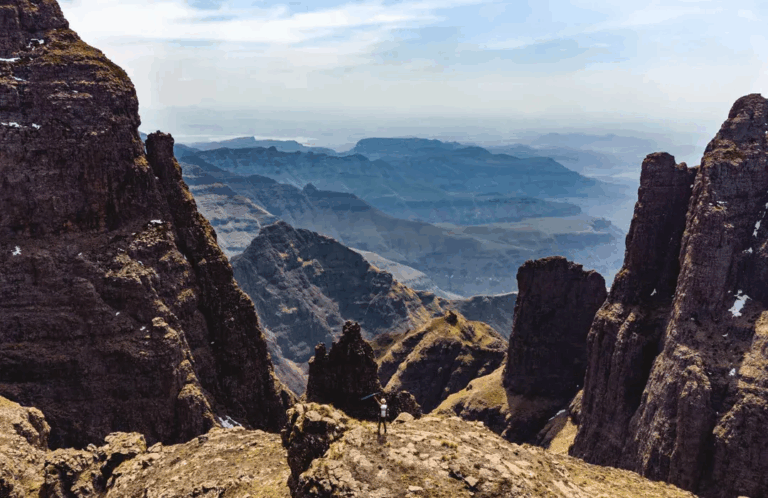
Picture/Adrian Teh/All Trails
Covering over 200km of rugged peaks and escarpments, the Drakensberg Grand Traverse is often called one of the continent’s toughest hikes. The route is unmarked and requires serious navigation skills (and often a guide), but it is rewarded with breathtaking views over KwaZulu-Natal’s jagged borderlands and wild campsites under the stars. It’s one of the few hikes where you may meet more Basotho shepherds than fellow trekkers.
Rwenzori Mountains – Uganda
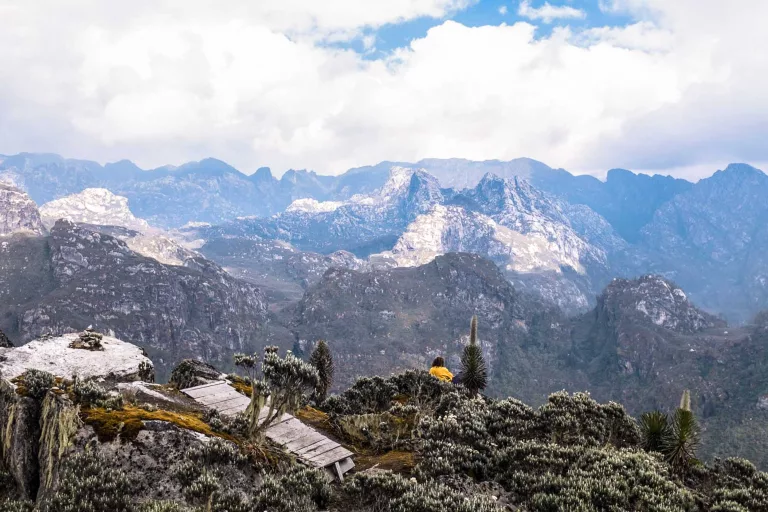
Picture/Adventure.com/Tanya Gentle
Known as the “Mountains of the Moon,” the Rwenzori range is home to Africa’s third-highest peak and one of its most unique ecosystems. The Rwenzori Mountains National Park is also a UNESCO World Heritage site. Expect hanging moss forests, alpine meadows, and glaciers—yes, glaciers—despite being near the equator. Multi-day treks to Margherita Peak (5,109m) involve technical sections and the kind of changing terrain that feels otherworldly.
Mount Cameroon – Cameroon
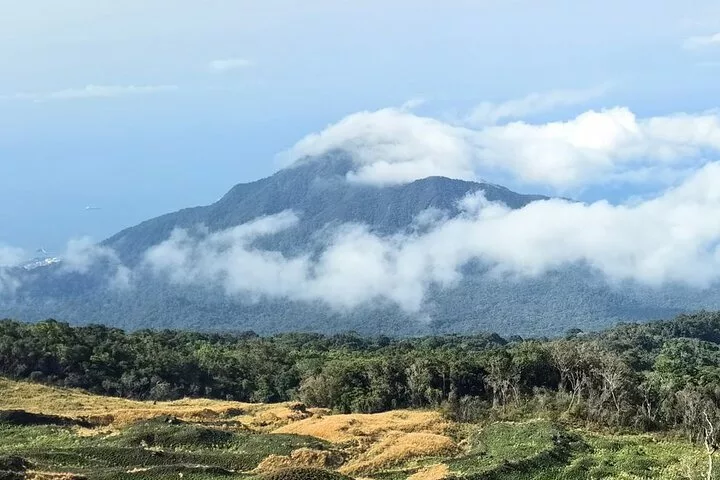
Picture/Mount Cameroon/Lokalee
Mount Cameroon, also known as ‘Mountain of Greatness’, West Africa’s tallest volcano, rises sharply from the rainforest to a cloud-wreathed summit. Treks begin in Buea and often include encounters with local communities and traditional festivals. The hike is tough—about two to four days—but offers a rare chance to scale an active volcano and descend through multiple ecosystems.
ALSO READ: Regenerative tourism: Giving back to destinations
Mount Mulanje – Malawi
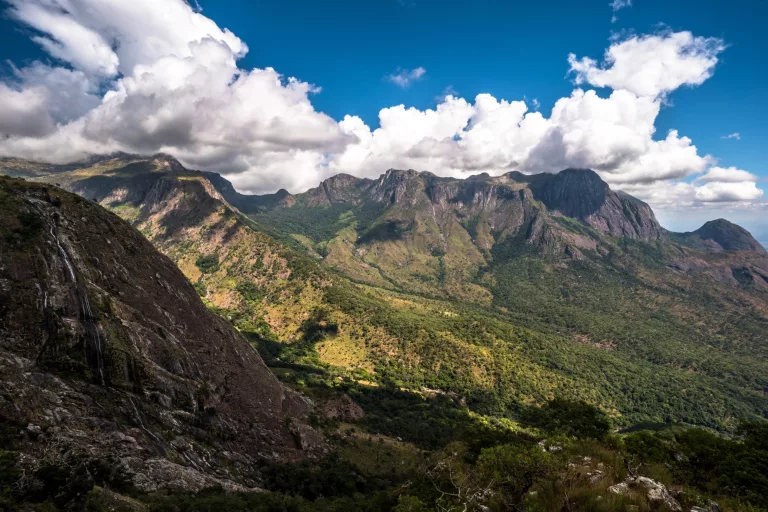
Picture/Far and Wide Travel
Malawi’s Mount Mulanje is beloved for its mystical appeal and flexibility. Hikers can tailor routes to suit anything from a weekend escape to a week-long traverse, sleeping in rustic mountain huts along the way. The central peak, Sapitwa, which stands at 3,000 metres, offers dramatic views, while the surrounding tea estates and local guides provide a distinctly Malawian experience.
Mount Elgon – Borders between Uganda and Kenya
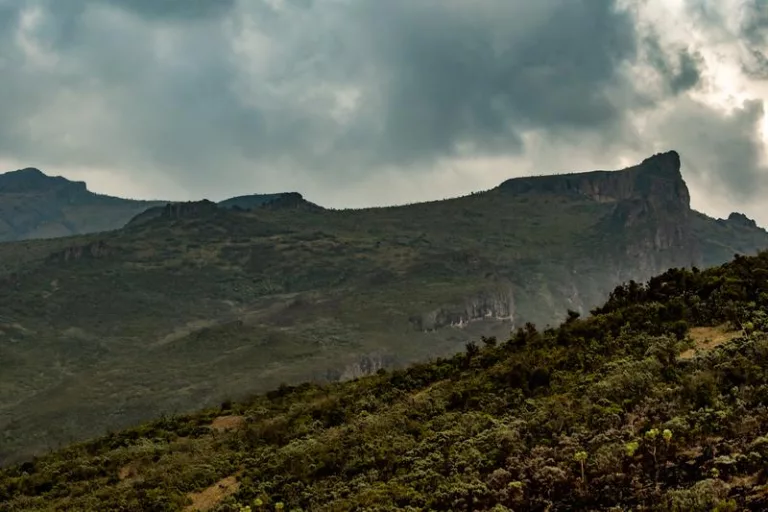
Picture/Mount Elgon Trekkers
Straddling the border of Uganda and Kenya, Mount Elgon is a massive extinct volcano with a collapsed caldera that spans over 40km. Climbing Mount Elgon takes between 4 to 6 days, depending on the trail used. There are three main starting points – The Salsa Trail, Pisa Trail and Sipi Trail. The Salsa Trail, also known as the Buddukiro trailhead, is shorter but with very steep climbs. The hike is also gentler than Kilimanjaro, making it ideal for those seeking a high-altitude trek without extreme altitude gain.
Tadrart Acacus Mountains – Libya

Picture/Tours Libya/Naftali Hilger
For those drawn to the Sahara’s stark beauty, the Tadrart Acacus range in Libya (or neighbouring Algeria’s Tassili n’Ajjer) offers haunting sandstone formations and prehistoric petroglyphs etched into canyon walls. Multi-day guided treks are the only way to explore, often led by Tuareg nomads. Due to political instability, safety advisories must be checked, but this is desert hiking at its most cinematic.
Mafadi via Injisuthi – South Africa
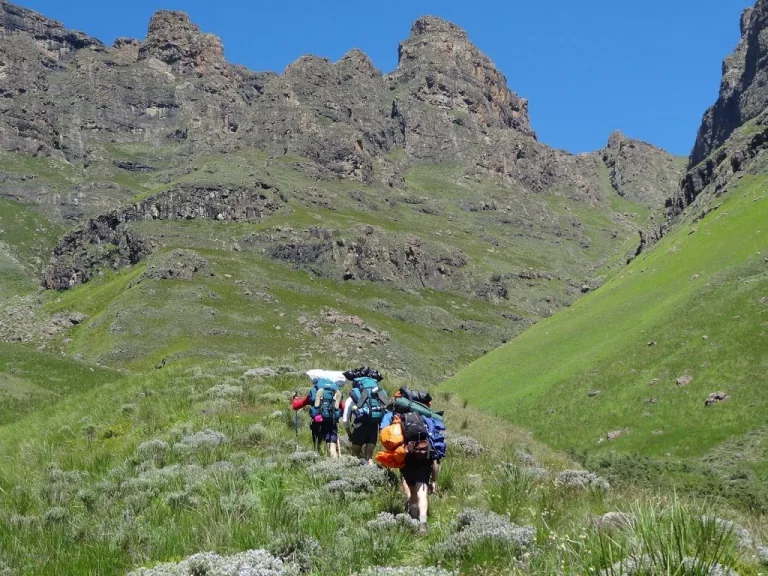
Picture/Drakensberg Hikes
Often overshadowed by Kilimanjaro, Mafadi is South Africa’s highest point at 3,450m. The route via Injisuthi Camp is a strenuous climb involving rock scrambles, river crossings, and camping in caves— its ascent doesn’t require any technical skill but a high standard of physical fitness and gear. From the summit, hikers are rewarded with sweeping views over Lesotho’s highlands and the heart of the Drakensberg.
Nyika Plateau – Malawi
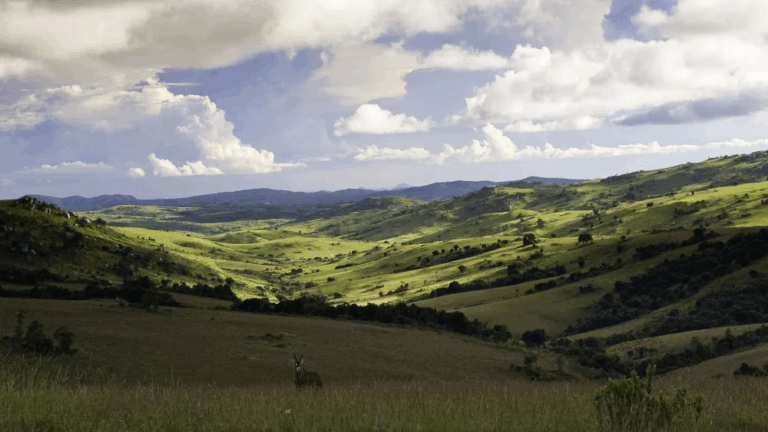
Picture/Robin Pope Safaris
A contrast to the sharp peaks elsewhere, Nyika Plateau offers rolling hills, montane grasslands, and high-altitude peace. Wildlife sightings include zebra, eland, and occasional leopards, with trails that thread past trout streams and through mist-shrouded forest patches. It’s a lesser-known gem for those who want to walk for days with barely another human in sight.
Follow us on social media for more travel news, inspiration, and guides. You can also tag us to be featured.
TikTok | Instagram | Facebook | Twitter
ALSO READ: Monteverde, Costa Rica: The eco-adventurer’s paradise





